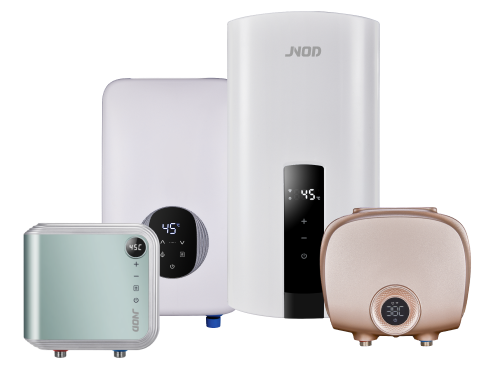Imagine you’re in the midst of a bustling morning, yearning for a swiftly prepared hot beverage or requiring boiling water for a culinary concoction. At this juncture, the unparalleled efficacy of a premier instant hot water dispenser becomes manifest. Effortlessly actuate the hot lever mechanism, and these indispensable devices proffer immediate access to piping hot water, directly from your kitchen sink, thereby circumventing the temporal inefficiencies inherently associated with conventional kettle or stovetop boiling methods. With the progressive advancements in culinary technology, instant hot water dispensers have emerged as quintessential fixtures in both contemporary domestic settings and corporate environments, acclaimed for their harmonious blend of expediency and operational efficiency.
Whether it’s for the preparation of artisanal instant coffee, the meticulous formulation of nuanced infant nutrition, or even to accelerate the culinary process of al dente pasta, these dispensers represent a paradigm shift in kitchen functionality. Available in an extensive array of configurations and aesthetic designs, each is intricately engineered to satisfy specific gastronomic requirements and individual stylistic inclinations. Consequently, whether your objective is to incorporate an instant hot water dispenser within the ambiance of a residential kitchen or to leverage its capabilities for commercial endeavors, selecting a model that precisely aligns with your targeted utilitarian and aesthetic criteria is of paramount importance.
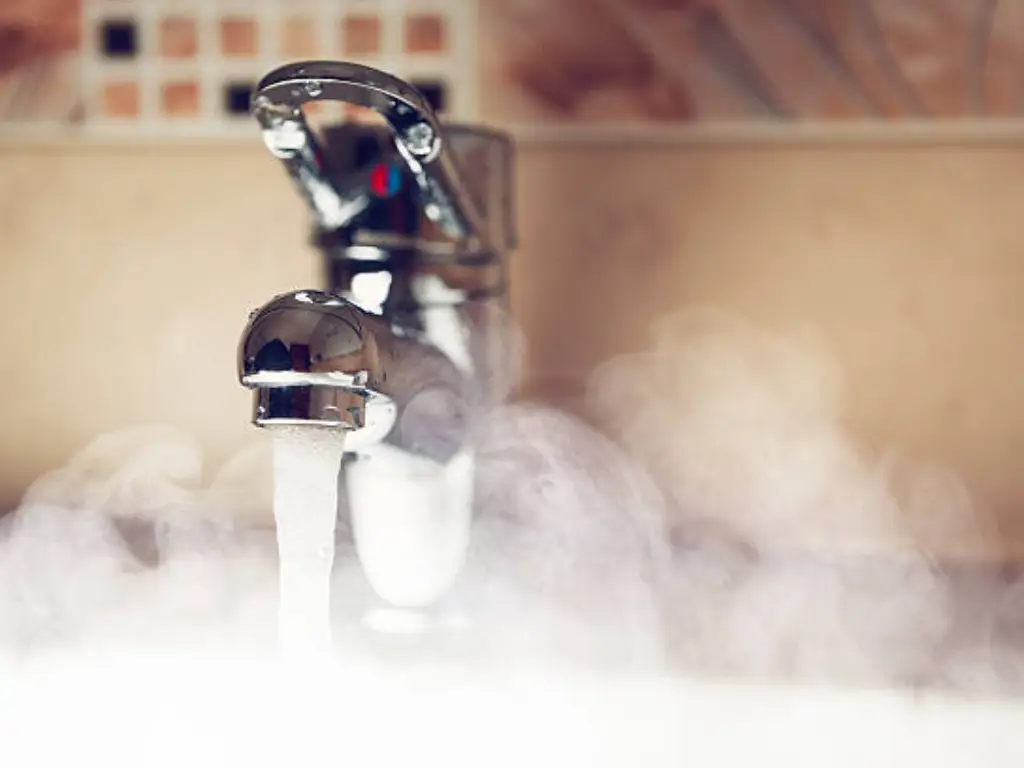
Types of Instant Hot Water Dispensers
Tank vs. Tankless Models
In the realm of instant hot water dispensers, two predominant variants emerge: tank and tankless models. The question arises, which epitomizes the perfect hot water dispenser? Tank models are equipped with an integrated hot water tank, typically ensconced beneath the kitchen sink. These units excel in storing and thermally conditioning water, thereby guaranteeing its immediate availability. Some high-end models also offer cold water dispensing, making them a versatile solution for all seasons. Particularly suited for frequent usage, these models, however, necessitate a portion of cabinet space for installation.
Conversely, tankless models operate on a principle of on-demand heating, thereby obviating the need for volumetric storage. These units are celebrated for their superior energy efficiency and the perpetual provision of hot water, ensuring an uninterrupted supply. Nevertheless, it is noteworthy that they may exhibit a marginally prolonged duration in dispensing hot water when juxtaposed with their tank counterparts. This slight delay is a small trade-off for their compact design and energy-saving attributes.
Countertop vs. Under-Sink Varieties
Instant hot water dispensers can be mounted in different ways, such as on the countertop or under the sink. Countertop models are easy to install and can be moved around if needed, while under-sink models save counter space and provide a more streamlined look. Countertop dispensers are favored by individuals seeking easy access, straightforward setup, and mobility. These units rest atop your kitchen counter, making them ideal for rented spaces or offices where permanent modifications are impractical.
In contrast, under-sink models are discreetly installed beneath the counter, directly integrated with the water supply. They provide a streamlined appearance while conserving precious countertop real estate. For those who value an uncluttered kitchen aesthetic and possess the necessary under-sink space, these variants are the preferred choice.
Key Features to Look for in 2023
Temperature Control and Spectrum
In the process of discerning the best instant hot water dispenser, the mechanism of temperature control emerges as a paramount attribute. Contemporary models, as of 2023, are equipped with an elaborate thermal spectrum, generally fluctuating between approximately 160°F to an almost boiling state. Such precision is indispensable, particularly for aficionados of hot drinks like tea, who are cognizant of the fact that green tea requires a comparatively tepid temperature, proximate to 175°F, whereas black tea flourishes under more fervent conditions, near 212°F. Shunan Teng, founder of Tea Drunk Academy in New York, emphasizes the importance of temperature control when using hot water dispensers for delicate tea.
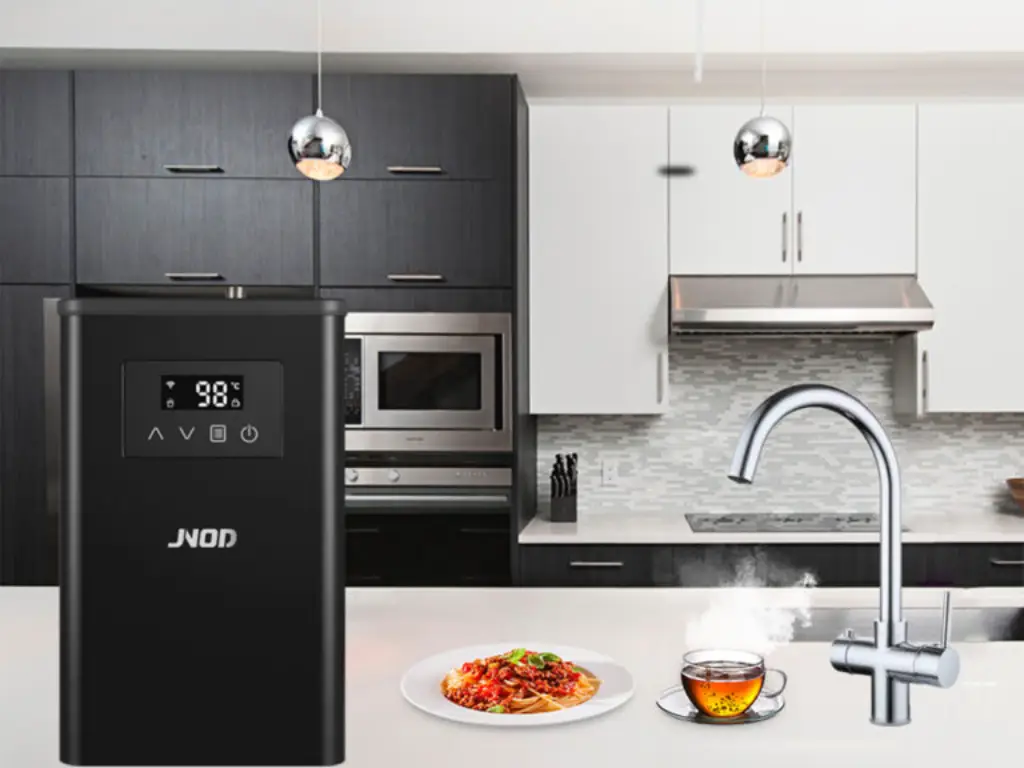
Furthermore, the capability to fine-tune temperature settings is instrumental in accommodating a wide array of culinary procedures. For example, the gentle warming needed for intricate sauces or the careful melting of chocolate necessitates lower thermal thresholds to preclude burning, while a vigorous boil is imperative for the expeditious preparation of pasta. This versatility transcends mere convenience, positioning itself as an essential instrument within the culinary repertoire of any domestic chef.
Thermal efficiency is yet another aspect of paramount importance. The facility to modulate the temperature setting can enact a noticeable decrement in energy consumption. Illustratively, ameliorating the temperature from 208°F down to 190°F may culminate in an energy preservation of approximately 10-15%, according to empirical energy analyses. This reduction is not only economically beneficial, reducing electricity expenditures, but it also harmonizes with sustainable environmental stewardships. Opt for models that proffer an extensive temperature range, augmented by meticulous control, to customize your culinary environment to fit your precise predilections and necessities.
Capacity and Flow Dynamics
The volumetric capacity of an instant hot water dispenser is an essential factor to deliberate, especially for entities with elevated utilization needs. For larger households or those with frequent requirements, opting for a dispenser equipped with a substantial reservoir, typically in the ambit of 2.5 to 3 gallons, is recommended. Such capacity ensures an uninterrupted availability of hot water throughout the day, facilitating numerous applications without necessitating frequent replenishments.
Conversely, for smaller domiciles or environments where spatial economy is paramount, a tankless model may serve as an optimal solution. These devices engender hot water instantaneously upon demand and, devoid of voluminous storage, they perpetuate a continual supply of hot water. Their operational efficiency and compact design render them a sagacious option for confined living quarters or less intensive usage patterns.
Hydraulic flow rate, another pivotal criterion, is commonly quantified in gallons per minute (GPM). An ideal flow rate for a typical household is considered to be in the range of 0.5 to 0.75 GPM. This flow rate efficaciously balances the need for expedient access to hot water against the risks of excessive splattering or undue wastage. For example, a flow rate of 0.7 GPM implies that filling a standard 8-ounce cup would require approximately 8-10 seconds, a duration that is typically acceptable for a myriad of domestic culinary activities.
Nonetheless, it is imperative to acknowledge that augmented flow rates, albeit beneficial for swift filling of larger vessels, may precipitate escalated energy consumption and potential thermal dissipation. Hence, procuring a hot water system that features an adjustable flow rate can furnish a versatile solution – optimizing efficiency for routine tasks while still accommodating scenarios demanding greater water flow. This feature ensures a tailored approach to both conservation and convenience, aligning with varied user requirements and preferences.
Energy Conservation Innovations
In the contemporary landscape of 2023, the paradigm for the best hot water dispensers transcends mere instantaneity; it encapsulates a commitment to environmental stewardship. Prospective purchasers are advised to seek out models embellished with advanced energy-conservation technologies. These may encompass enhanced thermal insulation materials, adept at maintaining the water temperature with minimal thermal loss, thereby obviating the need for continuous reheating. Additionally, sophisticated dispensers may be integrated with intelligent adaptive systems, designed to analyze and learn from your consumption patterns, subsequently minimizing the operational energy expenditure by avoiding superfluous heating cycles.
These innovations are not merely beneficial in curtailing operational costs — they represent a conscientious choice towards reducing your ecological footprint. By mitigating energy consumption, such systems contribute significantly to household energy efficiency and, by extension, to broader environmental objectives. This dual advantage of economic saving and environmental responsibility makes energy-efficient hot water dispensers a prudent and forward-thinking choice for any modern household or enterprise.
Sustainable Materials and Eco-Design in Hot Water Dispensers
In the realm of instant hot water dispensers, the integration of sustainable materials and ecologically considerate design is of paramount importance. Stainless steel, prevalent in the construction of water tanks, is renowned for its multiple environmentally friendly attributes. A stainless steel tank’s inherent corrosion resistance prolongs the appliance’s lifespan, diminishing the frequency of replacement and thereby reducing waste. Notably, stainless steel boasts commendable recyclability, with approximately 60% of newly manufactured stainless steel arising from recycled materials, according to contemporary industry statistics. This high recyclability rate significantly attenuates the overall environmental burden of the material.
While food-grade plastics are employed in certain models of dispensers for their cost-effectiveness and lightweight nature, they generally possess a more substantial ecological footprint due to the complexities associated with plastic recycling. In contrast, the durability and recyclability of stainless steel render it an environmentally superior option, particularly for those committed to sustainable living practices.
The design ethos of the dispenser is equally critical to its eco-friendly status. Designs that prioritize ease of disassembly at the end of the product’s lifecycle enhance recyclability and minimize waste. Certain models are intentionally crafted to reduce the use of mixed materials, thereby streamlining the recycling process. Furthermore, eco-conscious designs extend to energy consumption considerations. Dispensers with advanced insulation are less prone to heat loss, necessitating less energy to sustain the desired water temperature. For instance, a dispenser featuring a well-insulated stainless steel tank may achieve up to 30% greater energy efficiency compared to models with inferior insulation, offering substantial energy savings across the dispenser’s operational tenure.
Opting for a hot water dispenser that embodies these sustainable materials and eco-design principles allows consumers to indulge in the luxury of immediate hot water access while concurrently diminishing their environmental impact. Such choices reflect a conscientious move towards more sustainable consumption patterns, aligning with broader goals of environmental responsibility and conservation.
Contemporary Aesthetic Integration
In today’s culinary spaces, aesthetic cohesion is paramount, and the best hot water dispensers of 2023 are at the forefront of merging functionality with sophisticated design. These essential kitchen appliances are available in an array of designs that seamlessly enhance your existing kitchen decor. Opt for sleek, contemporary models that boast minimalist lines and modern finishes or embrace the classic elegance of traditional styles. Each variant is crafted not only to meet the rigorous demands of daily use but also to align with and accentuate the individual stylistic ethos of your culinary environment. When selecting your ideal hot water dispenser, consider it an opportunity to infuse both innovation and style into your space, ensuring that every detail contributes to a harmonious and stylish kitchen atmosphere, and enhances your kitchen experience.
Compact Design Considerations
In the domain of instant hot water dispensers, the prioritization of compact design is imperative, particularly within urban dwellings where kitchen real estate is highly valued. Under-sink models excel in spatial economy, typically occupying dimensions of approximately 6 to 8 inches in width and 11 to 12 inches in height. These units are ingeniously designed to integrate into the cabinetry below the sink, thereby optimizing underutilized space and substantially alleviating countertop congestion. This strategic placement is advantageous, particularly in more confined culinary environments where maximizing every square inch is essential. Empirical studies in kitchen spatial optimization suggest that leveraging under-sink areas can augment the functional surface area of a kitchen by as much as 15%.
In addition, contemporary designs in countertop models are progressively embodying the ethos of space efficiency. Current iterations are increasingly streamlined, with select models boasting dimensions as modest as 9 inches in height and 4 inches in width, paralleling the stature of a conventional coffee maker. This diminutive scale permits seamless integration into a variety of kitchen configurations, ensuring that the unit complements rather than commands the space.
The significance of integrating space-conserving attributes extends beyond the aesthetic appeal of kitchen decor; it is a testament to functional and efficient kitchen management. Opting for a hot water dispenser that marries the convenience of instant access with a minimalistic footprint empowers users to preserve a tidy, expansive kitchen area. This commitment to space-conscious design is instrumental in fostering a kitchen environment that is both ergonomically viable and conducive to a pleasant and stress-free culinary experience.
Digital Controls and Displays
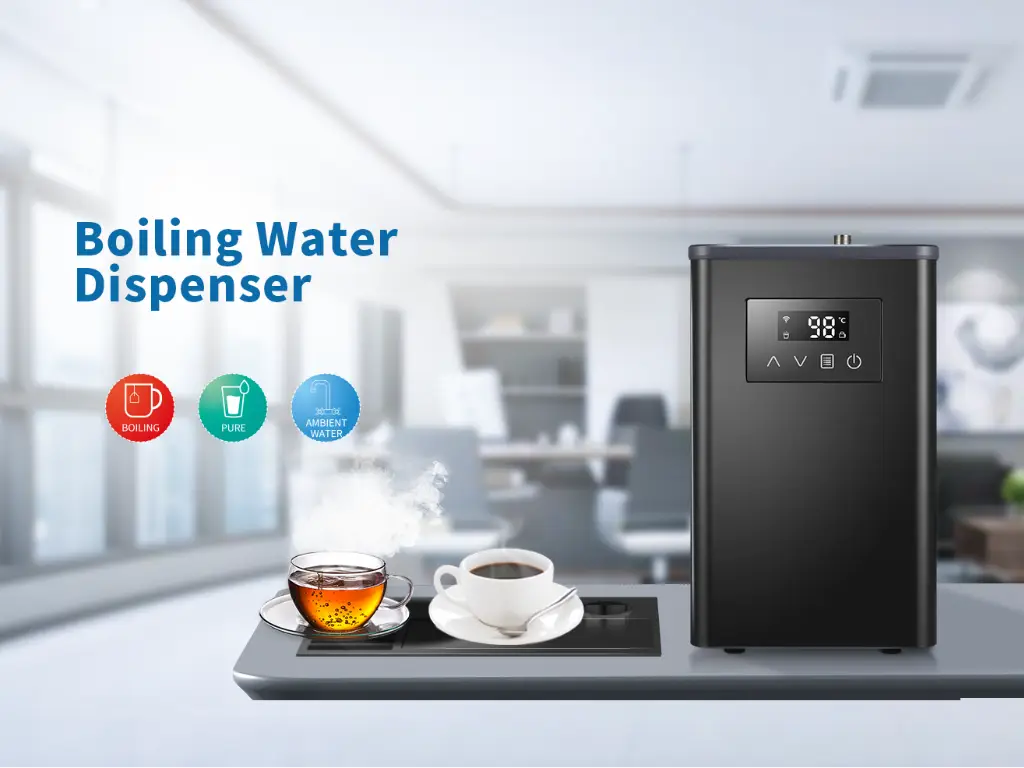
The incursion of advanced digital technology has markedly augmented the utility and user-friendliness of contemporary hot water dispensers. These devices are increasingly equipped with sophisticated digital interfaces and lucid LCD or LED displays, facilitating users in the accurate calibration and real-time monitoring of water temperatures. For instance, numerous models now offer granular adjustable temperature settings in one-degree increments, providing users with exacting control over the temperature spectrum, which typically ranges from 160°F to just below boiling point. This level of precision is especially advantageous for culinary aficionados and hot beverage experts, who demand specific temperatures for brewing teas, coffees (whether it is instant coffee or others), hot chocolate, or other gastronomic preparations to extract full flavors. Additionally, the curved body of these dispensers makes fitting bowls, mugs, and water bottles directly beneath the spout easy.
Moreover, select models are enhanced with programmable timers, a feature that allows users to schedule hot water availability to coincide precisely with their needs, thereby optimizing kitchen routines and elevating overall convenience. This technological evolution radically redefines the user experience, rendering it more streamlined and adaptable to individualized usage patterns and preferences.
Intuitive User Experience
Contemporary instant hot water dispensers are transcending mere functionality, embracing sophisticated control mechanisms to deliver an intuitive and enriched user interaction. The forefront models in the market are integrating advanced features such as WiFi connectivity and remote operational capabilities, significantly elevating the convenience and personalization aspects of the appliance. For instance, certain dispensers can synchronize with smartphone applications, enabling users to fine-tune settings, track usage statistics, or activate the unit remotely. This capability allows individuals to have boiling water prepared for their beverage of choice even prior to entering the kitchen, epitomizing a harmonious fusion of convenience and contemporary lifestyle.
Additionally, these advanced dispensers frequently boast user-centric interfaces on the appliance itself, featuring touchscreens or soft-touch command buttons, to streamline daily use and enhance accessibility. The adoption of these advanced technological elements is designed not to overcomplicate but to simplify and enrich the user experience, facilitating a more customized and interactive engagement with the device. Users can effortlessly personalize temperature settings for different beverages or program specific heating schedules. Such intelligent functionalities ensure that the dispenser accommodates the user’s unique lifestyle preferences and daily routines, thereby redefining efficiency and ease of use in the modern kitchen.
Safety Features in Hot Water Dispensers
Child Safety Locks and Thermal Safeguarding Mechanisms
In the sphere of instant hot water dispensers, prioritizing safety features is equally vital as enhancing convenience and efficiency. Acknowledging the inherent risks, particularly in homes with young inhabitants, manufacturers have integrated sophisticated safety systems including child safety locks and thermal safeguarding functions.
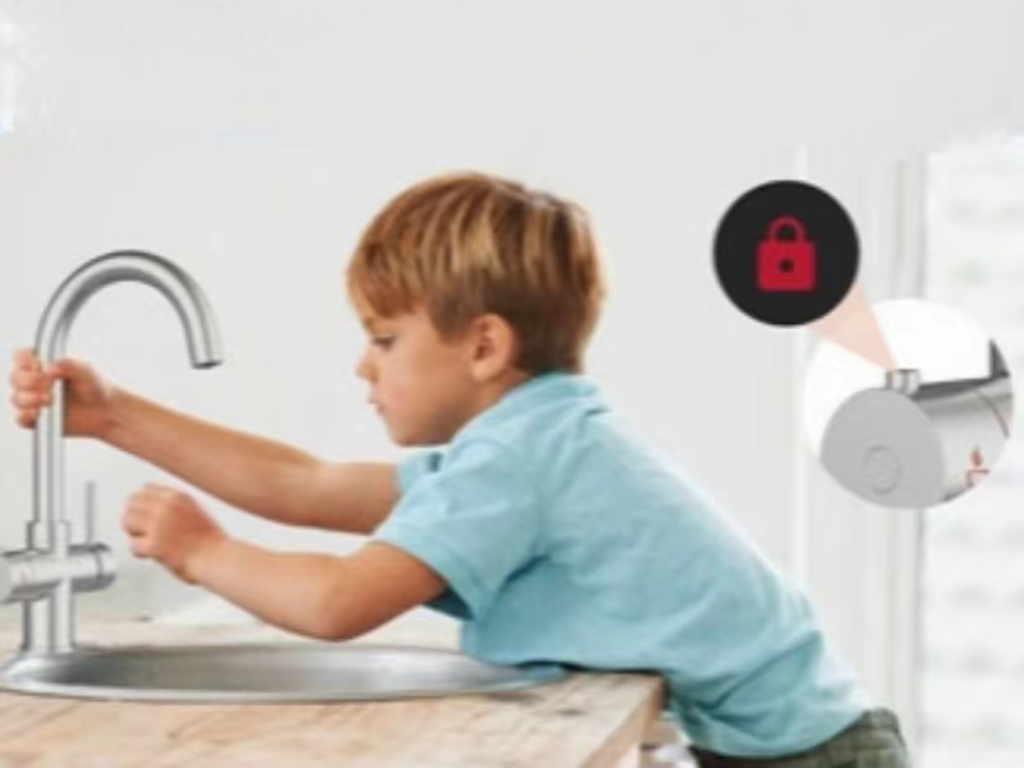
Child safety locks are engineered to thwart inadvertent operation by children, substantially mitigating the risk of thermal injuries. These mechanisms typically necessitate a series of deliberate actions to engage the dispenser’s function, a task that is intuitively simple for adults yet complex for younger individuals. For instance, specific models might require a prolonged press of a button to deactivate the safety lock, a maneuver deliberately designed to be cumbersome for smaller, less coordinated hands.
Thermal safeguarding functions are instrumental in maintaining a safe output temperature. Although capable of heating water to near-boiling points, these dispensers are equipped with measures to ensure the emitted water remains at a non-hazardous temperature. This is achieved either by capping the maximum temperature at a safer threshold, usually around 120°F – sufficiently hot for various applications yet not instantaneously scalding, or by necessitating an additional user action to access elevated temperatures, such as engaging a separate button or manipulating a safety valve.
Additionally, select models are enhanced with thermostatic mixing valves that temper the hot water by amalgamating it with cooler water, thereby diminishing the risk of scalding upon discharge. This precaution is especially crucial in environments with vulnerable individuals like children or the elderly.
Incorporating these safety features not only extends a sense of security but also broadens the user base, making the dispensers a practical option for diverse households. Through these safety innovations, manufacturers demonstrate a commitment to making hot water dispensers a reliable and family-friendly appliance.
Automated Termination and Thermal Safeguarding
Automated termination (auto-shutoff) and thermal safeguarding (overheat protection) stand as quintessential safety mechanisms in top-tier instant hot water dispensers, aiming to furnish users with both convenience and assured peace of mind. The auto-shutoff attribute is paramount in mitigating accidental hazards and enhancing energy conservation. It operates by instinctively deactivating the heating element once the water attains the set temperature or following a specified duration of inactivity. This provision not only curtails the risk associated with overheating but also aids in reducing energy expenditure. For example, certain dispensers are engineered to automatically power down following 1-2 hours of dormancy, markedly diminishing energy consumption relative to counterparts lacking this functionality.
Thermal safeguarding represents a critical component of the dispenser’s safety protocol. This mechanism is meticulously calibrated to preclude the unit from attaining perilous temperature thresholds that may precipitate operational failures or potential safety risks. Should the internal temperature escalate beyond a predetermined safety margin, the overheat protection system is triggered, thereby incapacitating the unit to avert any consequent damage or fire hazard. The safety threshold is usually established considerably above the maximum water temperature setting, yet remains well within a spectrum to assure absolute safety.
Collectively, these safety features not only render the dispenser a more secure appliance for domestic environments, particularly in households with vulnerable individuals like children or the elderly, but they also prolong the lifespan of the appliance by shielding it from damages attributable to excessive heat or prolonged activity. They epitomize the paradigm shift in modern appliance design towards ensuring functionality, safety, and energy efficiency.
Integration and Configuration
The integration of an instant hot water dispenser system into your kitchen is a relatively straightforward endeavor, with many units specifically engineered for user-friendly configuration. Nonetheless, a comprehensive understanding of the installation process is vital to facilitate a seamless and efficient setup. For countertop variants, the installation generally entails elementary procedures such as connecting the unit to an electrical outlet and affixing it to a pre-existing faucet using a diverter. This procedure is typically manageable by the consumer and can be completed in under an hour, negating the need for professional intervention. It is crucial to ensure that the outlet is capable of supplying the necessary power, as the dispenser generally requires 115 volts, 750 watts, and 6.25 amps.
Conversely, under-sink models present a somewhat more intricate setup, albeit accompanied by the manufacturer’s instructions. These units usually necessitate a direct integration with both the water supply line and an electrical source located beneath the sink. Prior to installation, it is imperative to verify the compatibility of the dispenser with your sink’s specific parameters, such as requiring a standard 120V outlet and a 3/8-inch water supply line. Given the complexities associated with harmonizing the dispenser with the existing plumbing infrastructure, professional installation is advocated for under-sink models to assure both optimal functionality and stringent safety standards. The installation by a qualified technician typically unfolds within a timeframe of 2 to 3 hours.
Prospective buyers should judiciously consider these installation prerequisites in conjunction with the spatial logistics beneath their sink to guarantee that the chosen dispenser amalgamates seamlessly with their kitchen’s design and functional scheme. This foresight ensures that the hot water dispenser not only meets immediate needs for instant hot water but also integrates harmoniously into the kitchen’s overall aesthetic and operational flow.
Manufacturer Credibility and Dependability
In the acquisition of an instant hot water dispenser, the imperative lies in selecting a manufacturer renowned for its esteemed reputation. Exemplary brands such as JNOD, InSinkErator, Zojirushi, and Breville are venerated for their steadfast dedication to quality and dependability, mirroring their unwavering commitment to the zenith of excellence. These distinguished entities set themselves apart not merely through the exceptional caliber of their products but also via their consummate customer support and comprehensive warranty offerings.
The rationale for gravitating towards a manufacturer with a well-established reputation for reliability is deeply entrenched in the expectation of sustained product performance and unwavering operational quality. Elite brands are known to dedicate significant resources towards research and development, thereby catalyzing advancements such as energy-efficient configurations and sophisticated safety mechanisms. These substantial investments are indicative of the likelihood that appliances procured from these instant hot water dispenser manufacturers will not only be resilient but will also facilitate a seamless operational experience.
Furthermore, the allegiance to a reputable brand often correlates with an enhanced resale value and the solidification of consumer trust. This trust is meticulously cultivated through an unwavering exhibition of customer satisfaction, bolstered by affirmative testimonials and robust referrals. Hence, the procurement of a hot water dispenser from a revered brand transcends a mere transaction and emerges as a long-term investment in unparalleled quality, superior functionality, and profound serenity.
Comparative Analysis of Top 2023 Models
Engaging in a meticulous comparative examination of the premier 2023 models from renowned manufacturers, we will dissect and scrutinize the pivotal features and performance benchmarks of various hot water dispensers. This comparative analysis will encompass key specifications such as volumetric capacity, precision temperature settings, energy efficiency, and more. The aim is to empower you with a comprehensive understanding, enabling an informed decision that aligns with your precise needs and environmental context, be it for your home or office.
| Feature | JNOD Instant Hot Water Dispenser | InSinkErator HWT-F1000S | Zojirushi CV-DCC40 | Breville HotCup | EcoSmart Tankless Water Heater |
| Mounting Type | Under Sink | Under Sink | Countertop | Countertop | Wall-mounted (varies by model) |
| Materials | 304 Stainless steel tank and food grade material | Stainless steel tank | Stainless steel interior | Plastic, Stainless Steel | Tankless |
| Temperature Control and Range | 113℉ – 208℉ | Adjustable (Near-boiling) | 160°F – 212°F | Boil only (not adjustable) | Digital, up to 140°F – 140°F+ |
| Touch Screen | Yes | No | No | No | No |
| Safety Features | Child lock, overheating prevention | Dry-start protection, Auto shut-off | Auto shut-off, Beep alert, Safety lock (lid) | Auto shut-off, Cool touch exterior | Thermal auto cut-off, Self-modulating technology |
| Product Dimensions(HxWxD) | Varies by model | 11″ x 6.8″ x 8.1″ | 14″ x 8.8″ x 11.1″ | Varies by model | Varies by model |
| Power Rating | Varies (1000W/1200W/1500W models typically) | 750 Watts | 840 Watts | Varies by model | Varies (8 kW to 36 kW models typically) |
| Optional Functions | Remote Control, WIFI function | Filtration system, tool-free tank connections | Timer, Swivel base, Multiple temperature settings | Variable dispense, Removable drip tray | Digital temperature control, Remote Control (some models), WIFI (some models) |
Important Notes:
- Mounting Type: Refers to how and where the unit is installed. InSinkErator models are typically mounted under the sink, Zojirushi is for countertop use, Breville HotCup is also countertop, and EcoSmart is generally wall-mounted.
- Materials: This is what the instant hot water tank or internal components are made of, affecting durability and taste.
- Temperature Control and Range: Indicates the ability to control the temperature and the range of temperatures available.
- Safety Features: These are included to prevent accidents, such as auto shut-off features and safety locks.
- Product Dimensions: The size of the product, which can be critical for fitting in designated spaces.
- Power Rating: This is the electrical consumption of the device, affecting its efficiency and how quickly it can heat water.
- Optional Functions: Additional features that may not be standard across all models or brands but offer enhanced usability or convenience.
JNOD Delivers Premium Instant Hot Water Solutions
At JNOD, we meticulously cater to the discerning preferences of our clientele, harmonizing state-of-the-art technology with user-centric functionality. Celebrated for their resilient construction and avant-garde design, JNOD’s dispensers are masterfully engineered to seamlessly blend into a variety of kitchen settings, enhancing both the practicality and aesthetic elegance of these environments.
Whether your focus is on superior thermal regulation, a considerable capacity to meet the demands of a bustling household, or a unit that exudes elegance and complements your kitchen’s decor, JNOD proffers tailor-made solutions. Our products distinguish themselves through their exceptional operational efficiency and steadfast reliability, reinforced by integral safety features such as child-proof locks and automatic shutoff mechanisms, ensuring a secure and worry-free experience for all users.
With an unwavering commitment to customer satisfaction, JNOD’s dispensers are backed by a comprehensive warranty and dedicated customer support, reflecting our unyielding dedication to excellence and sustained performance. Opting for JNOD for your instant hot water requirements is an affirmation of your dedication to refinement, efficiency, and safety — a sophisticated and prudent enhancement to any modern kitchen.
Maintenance and Care Tips
Periodic Maintenance and Calcification Removal
Ensuring the operational efficacy and extending the service life of your instant hot water dispenser are contingent upon adhering to systematic cleaning and descaling protocols. Accumulation of mineral sediments, particularly prevalent in regions with hard water, can progressively encrust the internal mechanisms and tank of the dispenser. Such sedimentation can detrimentally impact the unit’s thermal efficiency, compromise the quality and taste of the water, and diminish the flow rate.
Descaling, a pivotal aspect of boiling water tap maintenance, is recommended to be conducted every 3 to 6 months, though this interval may adjust according to the local water hardness and frequency of dispenser usage. Employing a descaling agent such as citric acid, recognized for its efficacious and eco-friendly de-scaling properties, can effectively disintegrate mineral build-up while safeguarding the dispenser’s intricate components. The standard regimen involves circulating a citric acid and water solution through the system, subsequently followed by an extensive flushing with clean water to expel any lingering descaling solution.
Moreover, the routine cleansing of external elements, including the faucet and spout, is equally critical. This practice not only maintains the dispenser’s sanitary standards but also assures its unimpeded functionality. Manufacturers typically provide bespoke cleaning instructions, which might entail the use of a damp cloth for surface wiping or the application of gentle cleaning agents.
Neglecting regular maintenance can precipitate a decline in efficiency, manifesting as protracted heating durations and escalated energy usage. In extreme scenarios, substantial calcification can lead to complete system malfunctions, invoking the need for expensive repairs or even full-scale unit replacement. Consequently, a committed adherence to a consistent cleaning and descaling schedule is imperative to maintain the dispenser’s peak performance and longevity.
Strategic Longevity Enhancement Tactics
To safeguard the prolonged functionality of your instant hot water dispenser, it is imperative to engage in proactive and strategic long-term maintenance. A critical component of this is the regular examination of hoses and connectors, which should be meticulously inspected for any indications of deterioration or leakage at minimum on an annual basis. Even minor anomalies, if disregarded, can escalate into more substantial complications.
For units equipped with a filtration mechanism, the timely replacement of filters is indispensable. Manufacturers typically advocate for a filter renewal every 6 to 12 months, contingent upon the frequency of usage and the particularities of water quality in your area. Consistently incorporating a new water filter is instrumental not only in preserving the water’s purity but also in averting obstructions and sediment accumulation, both of which can impede the dispenser’s operational efficiency and adversely affect the water’s flavor profile. Filtered tap water not only optimizes health but also helps save money by eliminating the need for bottled water.
Overlooking these maintenance imperatives can culminate in diminished efficiency, compromised water quality, and the potential for incurring significant repair expenses in the future. Conversely, a regimented maintenance schedule enhances the dispenser’s durability and ensures its continued operation at an optimal level, thereby fulfilling your expectations of convenience and efficacy.
Final Thoughts
In the pursuit of the quintessential instant hot water dispenser in 2023, one must astutely consider a confluence of multifaceted attributes: robust functionality, aesthetic allure, and paramount energy efficiency. Contemplate meticulously on the integration of the dispenser within the intricate tapestry of your daily routine and its harmonization with the kitchen’s milieu. In essence, the zenith of choice is achieved when it resonates impeccably with your distinctive prerequisites, thereby augmenting not only the practicality but also the gratification inherent in your daily culinary engagements.
